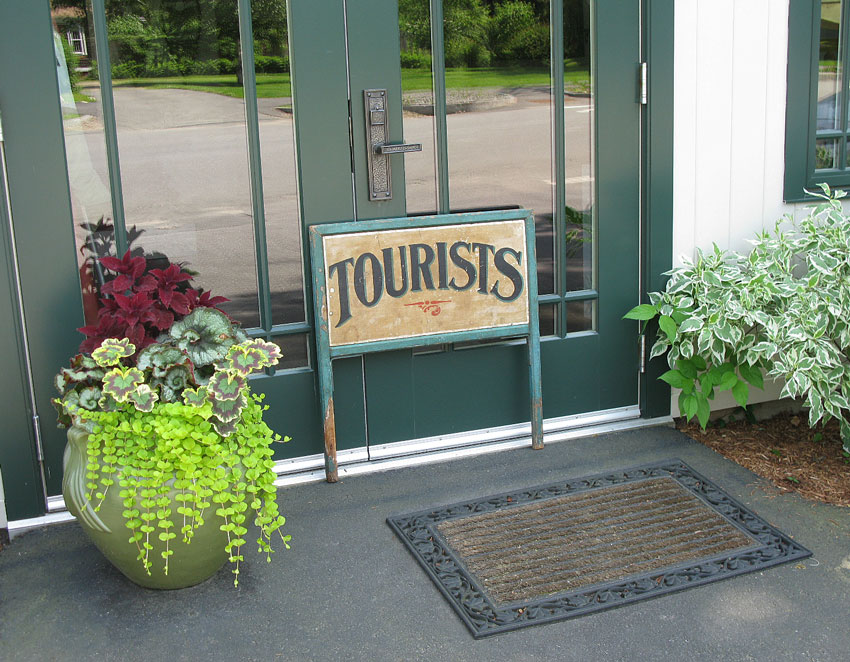Hand-Painted Tourists Sign
Although we all use the term “tourist” regularly, whether referring to ourselves on holiday or to hordes of vacationers invading our home towns, it is not so common to see signs on modern roadside establishments beckoning specifically to tourists. In contrast, during the 1920s through the 1940s, beginning just after automobiles became ubiquitous among middle class families and highways were being established and improved, the word “tourist” was used to lure burgeoning road traffic into lodging establishments, gift shops, restaurants and dubious roadside attractions all across the country.
Florida, 1941, U.S. National Archives
It is not surprising then, that most of the vintage tourists signs we acquire date from the 1920s-1940s. The framed tourist sign shown below (now sold) was made in the 1920s and came from the Catskills region of New York. It was most likely attached to the top of another sign, as the legs are long enough to hold it aloft, but are not long (or rotted) enough to indicate that they were posted in the ground.
This vintage photo taken in Louisiana shows the technique of layering signs to create the special effect of a place that gives you a lot for your time and money, making it irresistible for a traveler to pass by.
Signs in Louisiana, 1940, U.S. National Archives
Since running water, hot water, bathrooms, showers, heat and electricity could not to be taken for granted by tourists, these modern amenities merited special emphasis on road signs, whether layered as multiple signs, or painted all on the same sign.
Signs from 1938 in Ohio and 1940 in Maryland. U.S. National Archives.
While a lot of vintage tourist signs are simply painted in black and white, the one we are offering has multiple colors – green, ochre, red and black – which is not so common.
The shadowed letters, arched word presentation, and flourish beneath the center indicate that this might have been created by a professional sign painter, although there is no signature.
This sign is also double-sided and was definitely used outdoors, with the side that was presumably more exposed to harsh prevailing winds and driving rain being more weathered.
A double-sided sign such as this would have been erected perpendicular to the road so that tourists could see it as they approached from either direction, as illustrated in front of Mrs. Parkinson’s tidy establishment:
Ohio, 1938, U.S. National Archives
Vintage signs are a robust sector of the folk art market. Lodging and tourists signs are particularly desirable when they show attention to artistic detail, such as our Tourists sign does, when they capture a viewer’s imagination about long ago attractions, such as this sign advertising the Story Cottage Court in the desert does,
Arizona, 1940, U.S. National Archives
or simply when they convey the spirit and creativity of an ambitious proprietor, such as Floyd must have been:
Roadside amenities, Ohio, 1938, U.S. National Archives
So if like us, you live in a “vacationland” that friends and relatives love to visit, you might feel justified in posting a good folk art Tourists sign somewhere on or within your own guest-accommodating establishment.

























